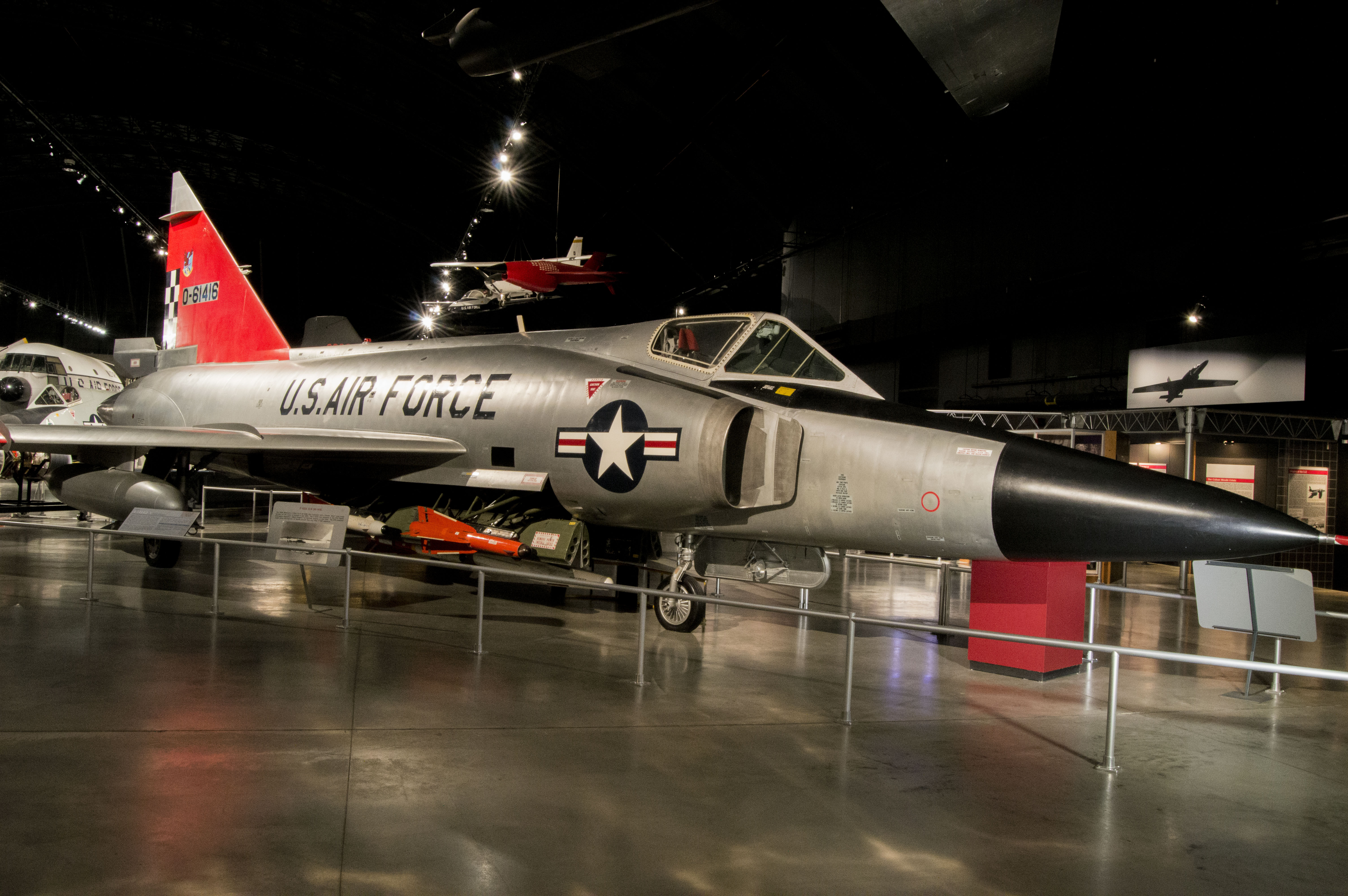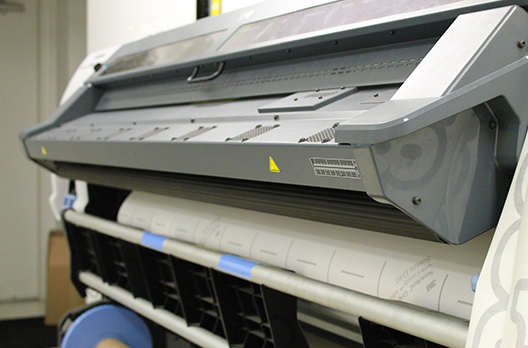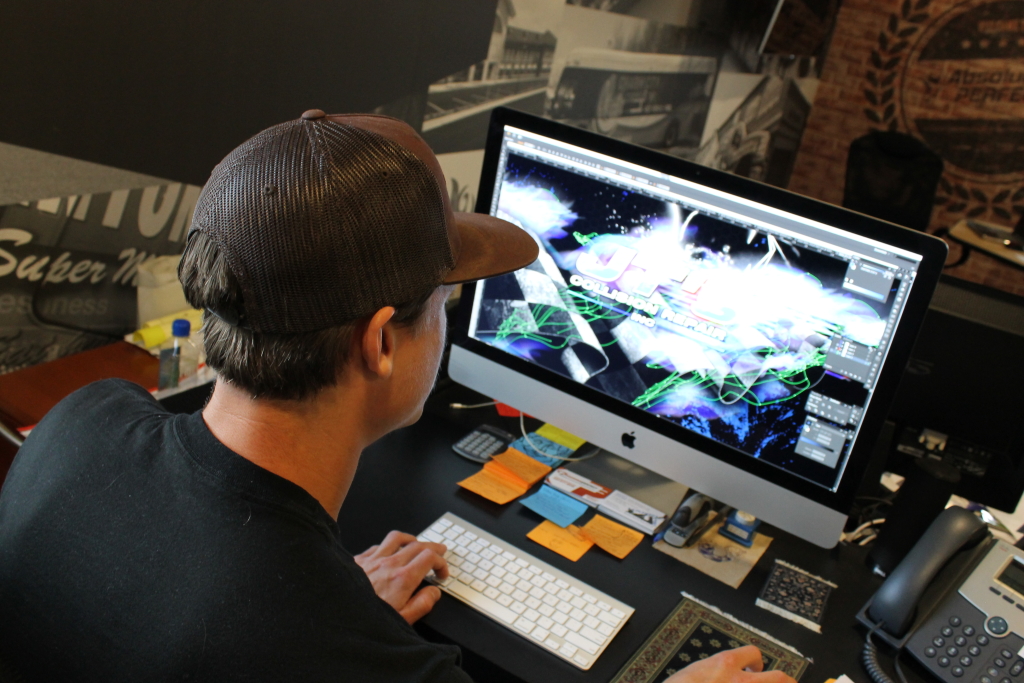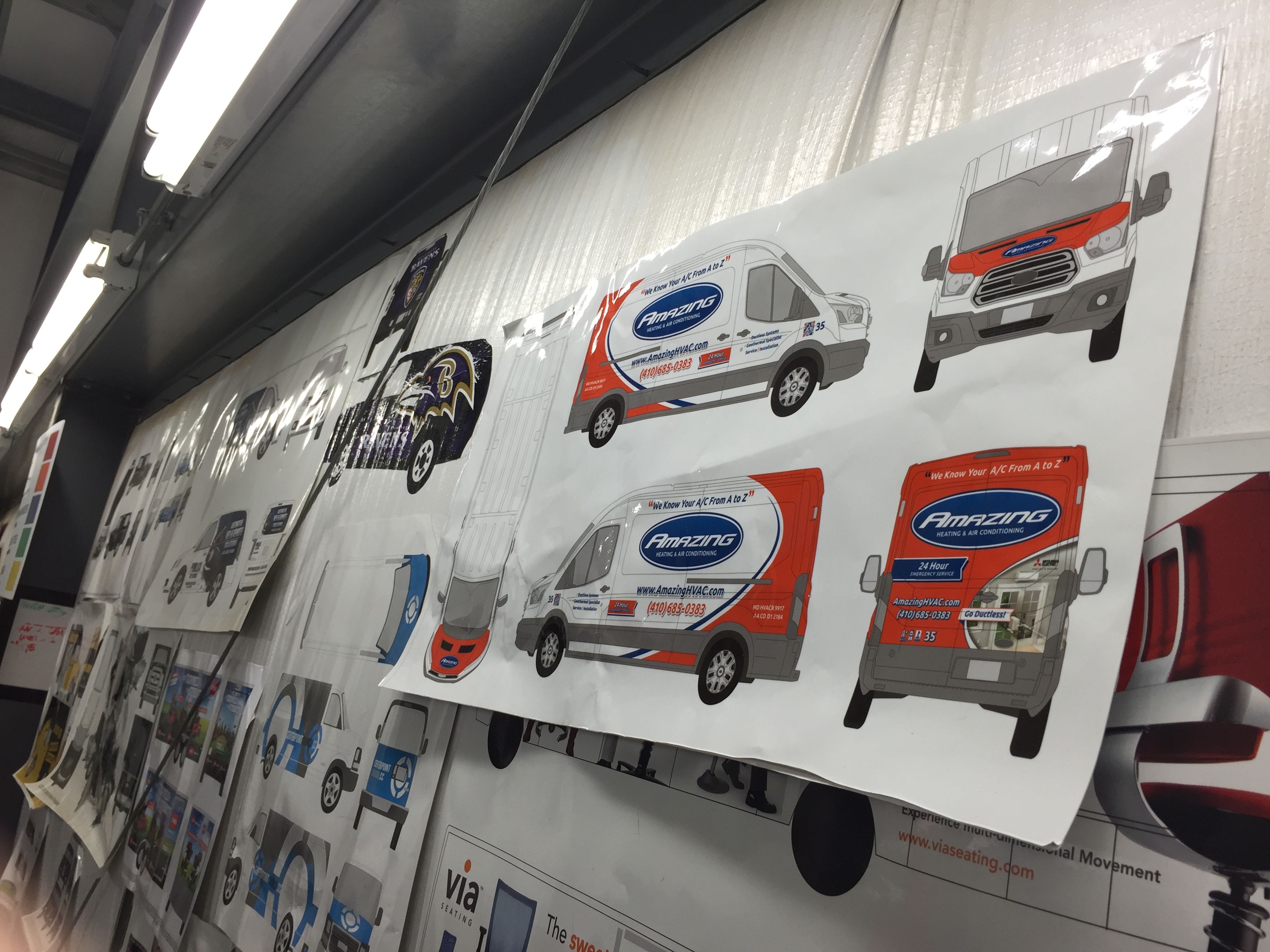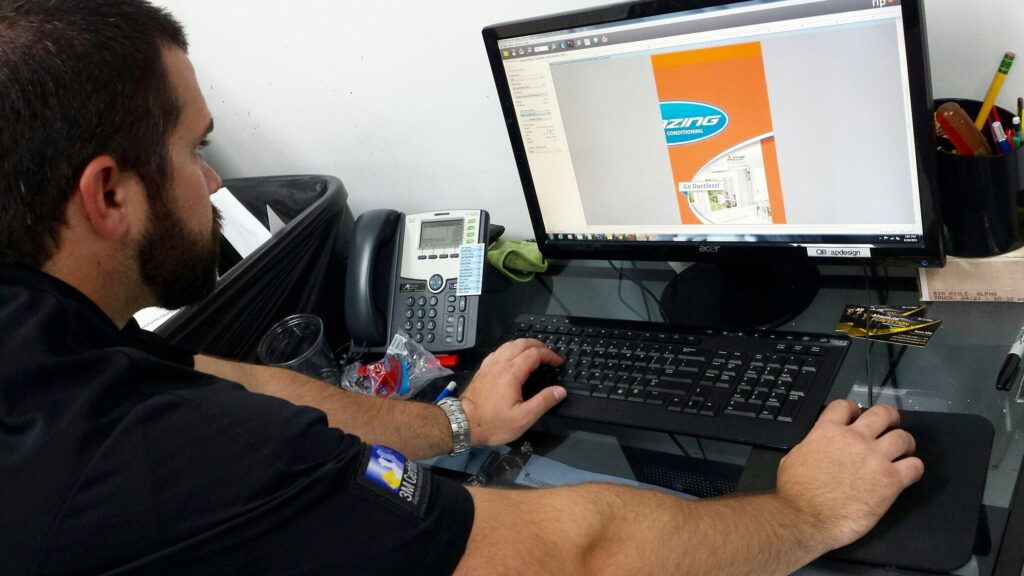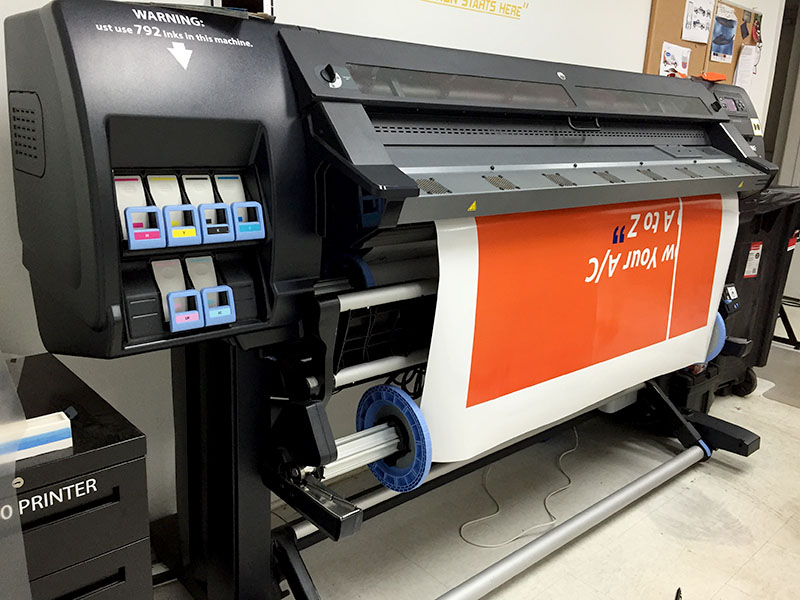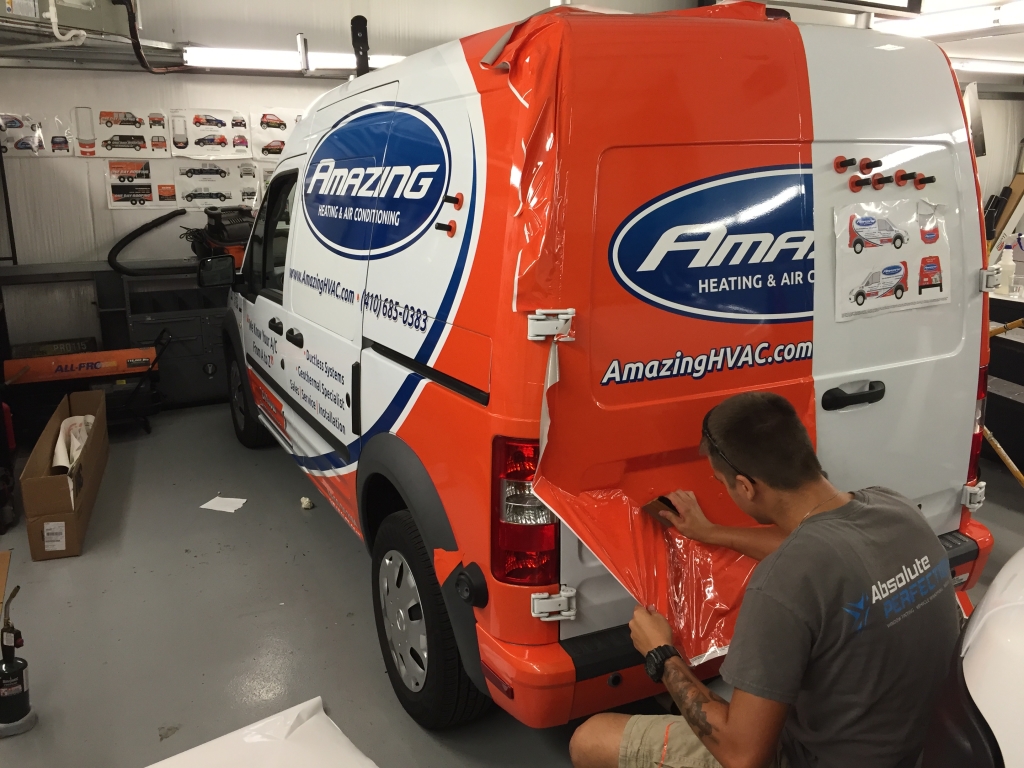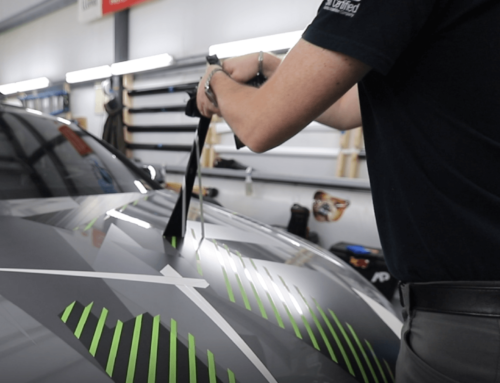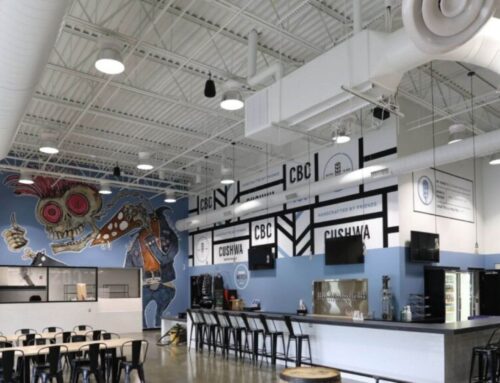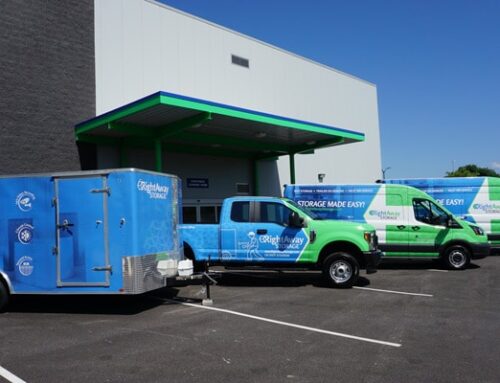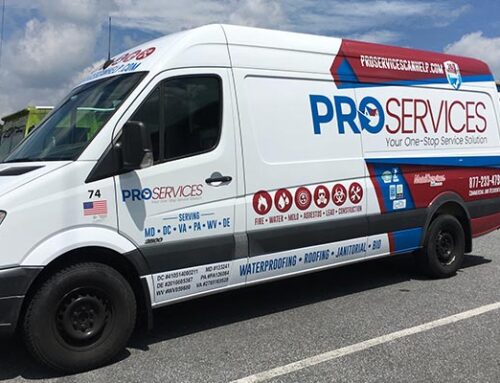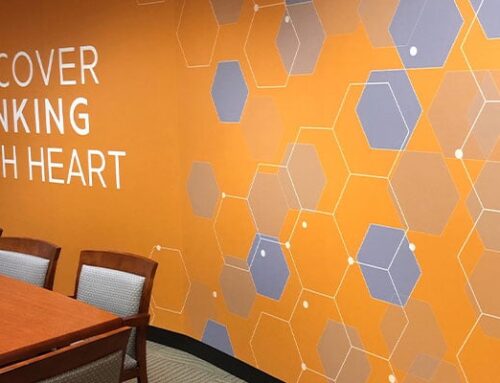The History of Vehicle Wrapping
Businesses and car enthusiasts have been putting their mark on their vehicles since the automobile was invented. Of course, early racing automobiles added numbers and markings to their vehicles for distinction during races, but the idea soon took on a business perspective.
In February of 1900, Milton Hershey became the first to use an automobile to advertise by painting his Lancaster, PA Hershey brand on a vehicle. Later, more embellished designs like Kolb’s Red Label Bread came to surface, incorporating different type faces and imagery. Originally, the only choice was to paint, but soon something more durable, flexible, and with more design options hit the scene.
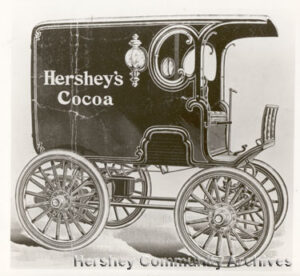
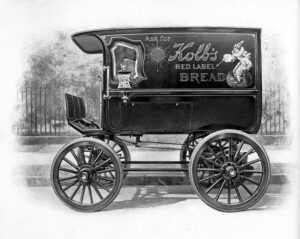
From the basic to the extreme, paint reigned supreme in the graphics world, and kept its exclusive place for over 50 years. But by the late 1950’s and into the 1960’s a new material began to emerge on the scene and changed the world of graphics forever: vinyl chloride.
The Invention of Vinyl Chloride: 1926
Vinyl – you can find this multipurpose material in a long list of day-to-day products. The versatile nature of this “plastic-like” material allows for many uses. It can be firm or flexible, thick or thin, and form any color possible. But where did vinyl come from?
In 1926, vinyl chloride was accidentally discovered by the Goodrich Corporation, formerly known as the BF Goodrich Company. In turn, the invention created new products, factories, and jobs in America. And as for the mobile advertising industry, it created so much growth opportunity.
Watch the video below to see how vinyl chloride was created.
The Introduction of Vinyl as an Advertising Medium
At first, only large clients like the U.S. Air Force could afford to use self-adhesive vinyl graphics, but by the 1980’s vinyl production costs and die-cutting technology had become affordable enough for small businesses to be able to letter their vehicles without paint.
By the early 1990’s, colorful die-cut vinyl had become the primary method of marking vehicles with lettering and logos for big businesses, while paint remained king for customizers and enthusiasts.
In the late 1990’s, new technologies were emerging that allowed printing on vinyl with wide format electrostatic printers, but like die-cut vinyl before it, only the largest companies could afford to use it. Additionally, its capabilities were extremely limited in design, color and image quality. A few companies experimented with wrapping vehicles, but with little success.
Innovation for Cheaper, Better Quality Vinyl Graphics
As the 21st century arrived, a convergence of technologies happened that not only made it possible for startups to purchase the equipment necessary to print on large format vinyl, but also to make the designs more striking than ever. With piezoelectric inkjet printers, large format graphic design software and computers that could handle over a gigabyte of data, the vinyl wrap was invented.
For the last decade the technology has been improving, and wraps are quickly taking over for both die-cut lettering and custom paint jobs. It’s no longer the question of “do vinyl graphics work and are they the best option for advertising?” It’s more like “how can we perfect this medium and make it the best that it can be?”
Today, the practice of designing, printing, and installing vinyl graphics on vehicles has become a streamlined process that involves training, experience, and certifications.
Modern Production of Vinyl Graphics
To produce a vinyl wrap, several different items are required – a pressure sensitive film engineered for the deep grooves and curves of modern vehicles, computers capable of handling files in excess of 3 gigabytes, a large format piezoelectric inkjet printer, and powerful graphic design software to create eye-popping designs.
It wasn’t until the practice of putting vinyl on vehicles was almost 50 years old that most of these things even existed, but out of multiple trials and errors, a powerful new industry and method of advertising was born and led by innovative companies like Absolute Perfection, located just outside of Baltimore, Maryland.
Inside we can see a wrap take shape from design through installation and watch every step of the way as this van becomes a unique work of art for a small local company.
The Design Process
A talented graphic designer knows the difficulties of working with vinyl on the unique designs and curves of today’s vehicles. After an initial meeting with the client to discuss ideas and gather information, the graphic design team begins developing the first draft.
Using the ideas they discussed and their own creative talents, as well as an understanding of the industry and branding of the client’s business, the artist carefully translates the concept into a life-sized high-resolution image on the computer, superimposed onto a line drawing of the client’s vehicle.
A snapshot called a “proof” is then captured and shrunk for the client to view. After a few changes to the design, the client gives the final OK and the process of producing the wrap begins. This proof is later used in the installation process for proper installs.
Paneling for Production
When the design is complete, the graphic artist and installation staff consult to create individual slices or “panels” that when installed on the vehicle will create a wrap that appears seamless. This is achieved by carefully matching panel seams to the door gaps and adding extra overlap for curves.
When this planning and slicing stage is complete, it is finally time to print the wrap. But just like your computer at home, before it can print, it has to process.
Vinyl Printing
The Raster Image Processor, or RIP as it’s known, drives the large format printer in much the same way as the print driver on your home computer, but with more features and power. Still, the basic and most important job is the same: to translate pixel data from the design software into ink drop data for clear output on the printer.
While the driver may be a lot for your home computer, Absolute Perfection’s wide format latex inkjet printer is over 8 feet long, weighs a half ton and can output graphics 6 feet wide and 150 feet long.
This printer requires a one liter ink cartridge for each of 6 colors; cyan, magenta, yellow, black, light cyan, and light magenta. It prints museum quality images at over 1,400 dots of ink per square inch for images that look like the real thing. At these resolutions and with such large files, speedy printing is a relative matter.
Pre-Installation Preparation
The main reason vinyl fails is because it isn’t cleaned well enough before the vinyl is installed. All vehicles should be taken through a car wash prior to vinyl installation. The car should then be inspected and cleaned with an isopropyl alcohol solution to eliminate all grease and possible dirt, then installed in a climate-controlled facility to avoid getting any dust or debris under the wrap. This eliminates the potential for breaking or tearing due to unwelcome temperature changes.
Installation
Vehicle wrap installation can usually be completed in 1-3 days. This depends on the size of the vehicle and detail of the wrap. Once the vinyl wrap is installed, it’s suggested to let vehicles sit for a day or so for vinyl curation, to ensure enough time has passed for the wrap to be secured. After this time, you can roll down windows and such with no problem.
The World of Vehicle Wrapping Today
Today, vehicle wrapping thrives in the United States. The industry continues to innovate with better products, strategic printing and installation practices, and more sophisticated designs. If you’re interested in an advertising vehicle wrap for your business, contact Absolute Perfection today!

